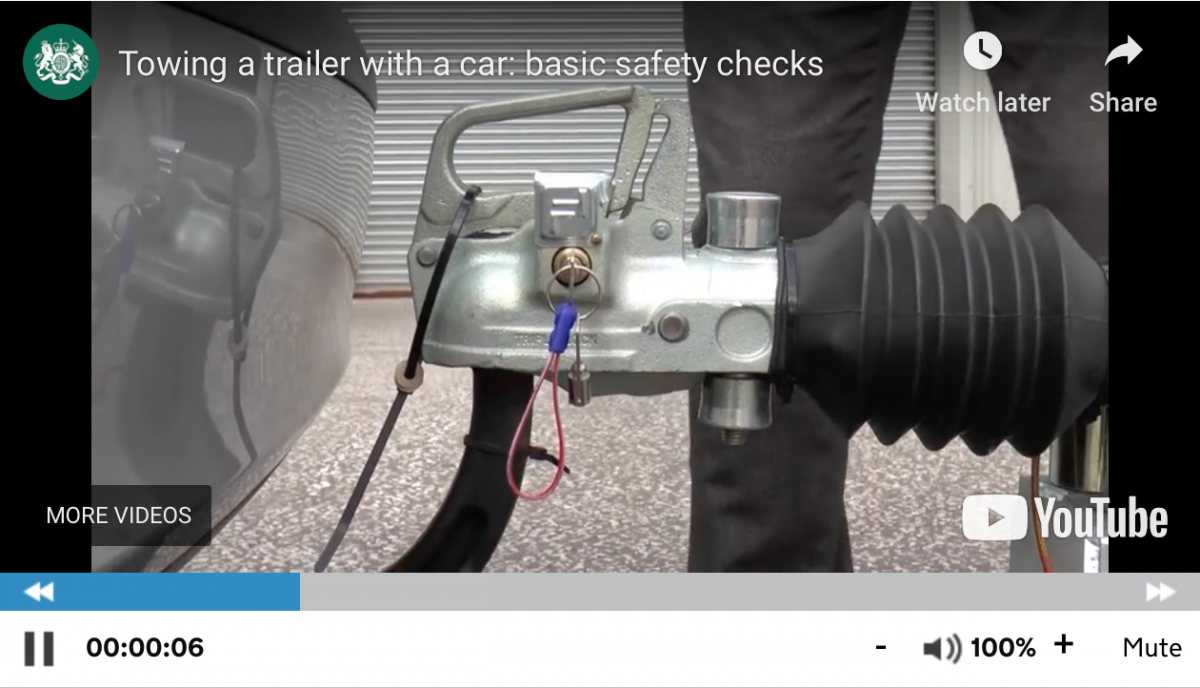Not to mention the keeping you and everyone else safe on the road, avoid a costly fine of up to £2,500, ban from driving, and 3 penalty points for using a vehicle in a dangerous condition by carrying out these checks every time you tow.
The DVSA have put together this handy video
Or for a handy checklist…..
Tow ball and connections
Check that:
- the trailer is correctly coupled to the towball or pin – follow the manufacturer’s advice
- the coupling height is correct
- the 7 or 13 core cable and plug isn’t damaged
- It is often thought that the fixed towbar is a stronger and safer solution than a detachable towbar. This is incorrect. The detachable towbar offers the same security and strength as the fixed towbar as long as it is fitted correctly. If you have a detachable tow bar ensure the safety indicator is fully green which indicates you have correctly locked the towbar in place. If the indicator is coloured red or only partially green, the towbar has not been properly connected and it is not safe to tow.
Breakaway cable
Use a breakaway cable or secondary coupling. This engages the trailer’s brakes (if fitted) or stops the trailer if it becomes detached from the car.
Check that:
- the cable isn’t worn or damaged
- there’s enough slack in the cable so that it doesn’t accidentally apply the brakes
- the cable won’t drag on the ground when you’re driving
Follow the manufacturer’s advice to make sure it’s connected correctly.
Wheels and tyres
Check that the tyres on both the car and trailer:
- don’t have any cuts or bulges
- are inflated to the manufacturer’s specification for the load being carried
Check that each tyre has a tread depth of at least 1.6mm:
- across the central three-quarters of the breadth of the tread
- around the entire circumference of the tyre
Check that the wheel nuts and bolts are tightened to the correct torque.
Check that mudguards are fitted to the trailer and they’re secure.
Lights and indicators
Check that there’s no damage to the lights, and that they’re all working correctly.
Load and weight limit
Check that:
- the trailer isn’t overloaded
- the load is distributed evenly
- the load is secure
Find your car’s weight limit
Do you know your cars weight limit? A simple check of the vin plate will tell you, for help and guidance read our previous article here
Trailer with no braking system
The loaded trailer:
- must not weigh over 750kg
- should not weigh more than 50% of your car’s weight
Trailer with braking system
The car and loaded trailer must not weigh over the second weight shown on the car manufacturer’s plates.
When you’re driving
You must not drive faster than the speed limit for the type of road.
If the trailer starts to snake or swerve, ease off the accelerator and reduce your speed gently. It’s a sign that either:
- you’re going too fast
- the trailer is loaded incorrectly
Don’t brake harshly on a bend, as it makes the trailer unstable. Reduce your speed in plenty of time when approaching any hazard.
Motorways
You must not drive in the right-hand lane of a motorway with 3 or more lanes.
——————–
If you prefer to leave it to the experts, the NTTA offer free checks for trailers up to 3500kg which will highlight any issues you need to address.







